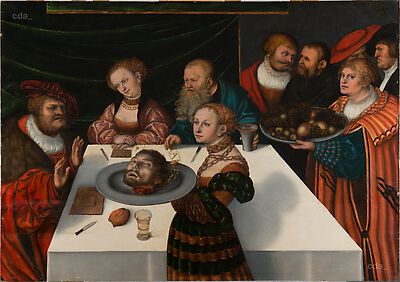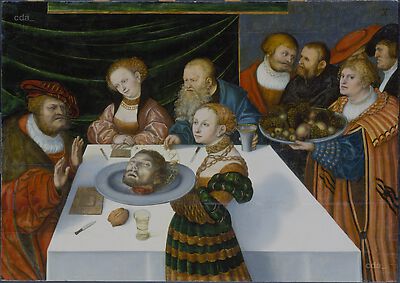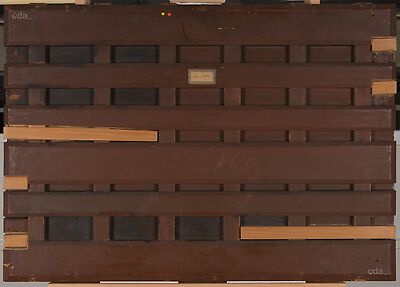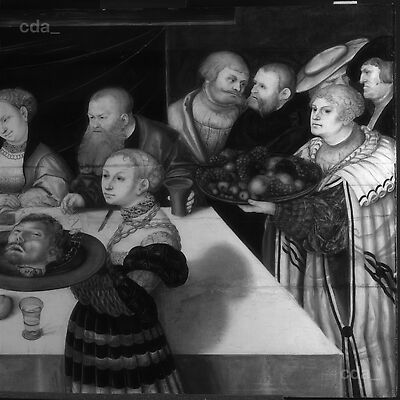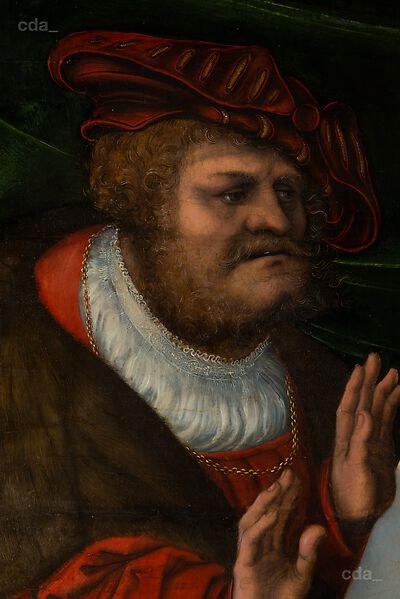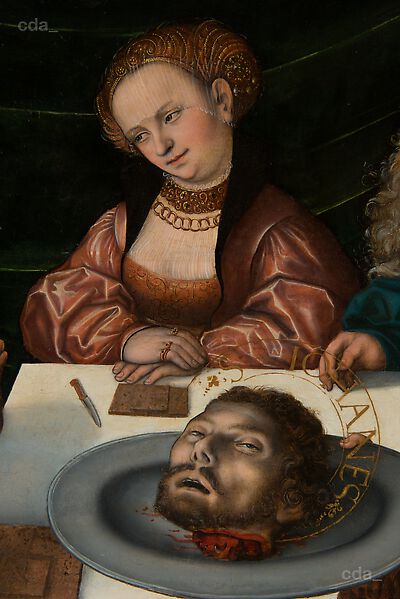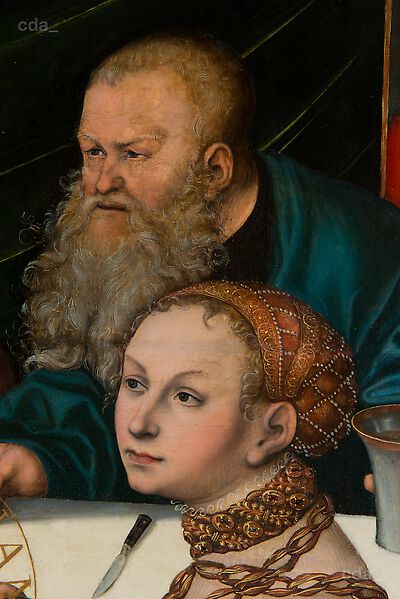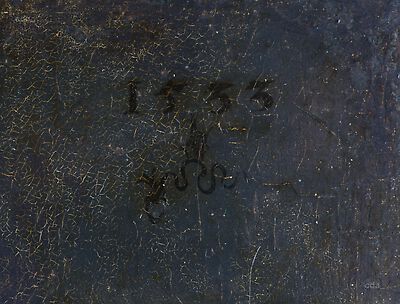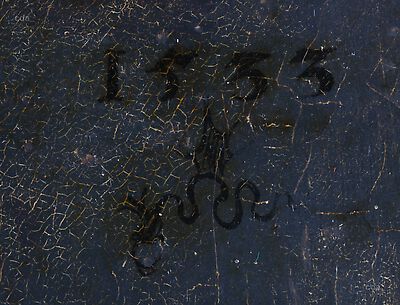In accordance with the biblical report by two Synoptics the painting shows the violent end suffered by St John the Baptist and caused by the intrigue of two women, Herodias and her daughter Salome. King Herodes had taken his sister-in-law, Herodias, as wife and imprisoned St John the Baptist, who
In accordance with the biblical report by two Synoptics the painting shows the violent end suffered by St John the Baptist and caused by the intrigue of two women, Herodias and her daughter Salome. King Herodes had taken his sister-in-law, Herodias, as wife and imprisoned St John the Baptist, who he actually admired, when he publically critised the relationship. At his birthday feast Salome captivated the King with her dancing so much that he promised to grant her any wish. Under the instruction of her mother Salome asked for the head of St John the Baptist on a plate, and against his will Herodes fullfilled her desire. Whereas the gospels emphasis that Salome presented the dish to her mother, the accent is slightly shifted in the panel in the Städel: here Salome enters the room, coming directly from the execution and Herodes is horrified by the ghastly results of his promise. The beautiful, young woman wearing a green gold brocade dress, a hair bonnet embroidered with pearls, a golden neck collar and two large chains strides to the left into the front picture plane in profile, and marks the central axis of the composition. She is cropped by the bottom edge of the painting at about knee-height; none of the figures are represented more than knee-length. Salome holds a large pewter platter in front of her chest with outstretched arms. The bearded and curly haired decapitated head of the youthful John the Baptist is on it with the face turned up so that the viewer is subjected to the gaze of his half-closed eyes. There is a nimbus of thin concentric circular lines with the circumscription 'S. IOHANES' behind his head. Directly behind the protagonist the almost square block of a table hidden under a white table cloth determines the arrangement of the figures. King Herodes, whose silhouette is increased by a voluminous red gown, sits on the left side cropped by the left edge of the painting. His head is decorated with a wine red beret. He holds his hands up instinctively in defense and stares at the severed head. The far side of the table is occupied by Herodias and an old man. The queen, distinguished by jewellery and a hair bonnet, and with her head inclined to the left, casts a telling sideglance towards her husband that is accompanied by a malicious smile. She has placed her hands on the table over each other. The simply clothed short-haired old man with a long beard beside her bends alarmed to the left in the direction the event; his open right hand rests on the table, while his left hand grasps a pewter goblet filled with wine. aA green cloth of honour is stretched behind the figures from the right edge of the table and extends beyond the right edge of the painting. It takes up over 2/3 of the entire width of the background. It is complemented by a baldachin of the same material over the table, the front of which appears along the top edge of the painting. On the right third of the painting a blue-grey wall serves as a background in front of which four courtly figures appear, holding their heads together and discussing in pairs. On the left two men with beards, on the right an almost concealed head with a cardinal's hat who speaks with a young man shown in profile, dressed in black with a black beret. In front of this group a blond curly haired page wearing an orange livery approaches the unoccupied right side of the table, and looks at the viewer out of the corner of his eye. As an unmistakeable parallel to the action of the protagonist he offers a platter laiden with fruit, on which green and black grapes, apples, pears and nuts are visible. The table is set with cork mats and knives; a bread bun and a glass of white wine are positioned at the edge of the table beneath the platter with the head of John the Baptist.
[Cat. Frankfurt 2005, 196-203]
